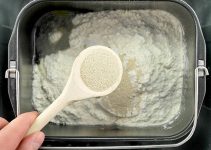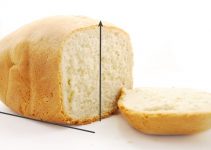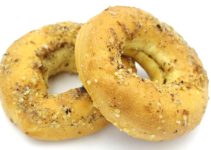I think the whole point of answering the question can you use a blender as a food processor is understanding if you can save yourself the trouble and money and just own one of these two kitchen appliances.
I am pretty sure that a lot more people own blenders than they own food processors. It’s probably a result of associating blenders with smoothies and vegetable cream soups. At least that’s what I mostly use my blender for.
Well, I’m definitely just guessing the fact that a lot more people own blenders than food processors. It’s just an assumption made based on my circle of friends and acquaintances.
For some of us it’s not a problem of paying for two kitchen appliances, it’s mostly of a matter of “where in this kitchen would I even have space for a food processor?”.
But let’s get down to it, let’s see if you can use a blender as a food processor and what that entails and what the results from this replacement might be.
I’m always on board when it comes to talking about substitutes in the world of cooking.
Contents
Can You Use a Blender as a Food Processor? The Blender & Food Processor Combo

It seems that manufacturers have decided to provide a concluding answer to the question can you use a blender as a food processor.
They have created complex kitchen appliances that work both as a blender and as a food processor by having more accessories than we’re accustomed to.
A blender & food processor combination in a single kitchen system is definitely a very good solution for those who don’t own either.
If you already own a blender, it’s still a good idea to get an answer to can you use a blender as a food processor.
To give you the direct answer:
The best replacement for a food process is a blender. But we still have to establish how well that works. And what are the limitations of using a blender as a food processor.
Second Solution: Get an Immersion Hand Blender
I have an immersion hand blender with a lot of accessories and it works great. I got it after my mother broke the blender and I didn’t want to pay a lot of money on a new one.
So, I decided to get the more affordable alternative that doesn’t even take counter space, it sits in a cupboard.
Some immersion hand blenders come with food grinders, which are separate bowls with their own blades that resemble a much smaller food processor.
I must say that my mother is impressed with that food grinder because she can even make minced meat in it. It’s really good.
With a hand blender it will take longer until you get closer to the smoothness that a normal blender is capable of but I got used to it.
The price and the many accessories that come with a hand blender are pretty awesome and I definitely think that it could be the perfect solution if you don’t want to get either a food processor or a normal large blender.
It’s great for households who don’t have a lot of space in the kitchen.
How to Use a Blender as a Food Processor
You can use a blender as a food processor for:
- making bread crumbs – you can start by breaking up a couple of slices of dried bread and process small quantities into bread crumbs by using the pulse button
- chopping veggies – you can achieve that by adding chopped veggies in smaller quantities but start on the lower speed and stop frequently to stir the veggies so that every chunk gets near the blades
- making baby food – if you want to make baby food from cooked vegetables the task is easy and you can use the high speed because cooked vegetables are already soft and the blades of a blender can shred ice so, they’re very sharp and sturdy
- pesto – it works perfectly because pesto is made with olive oil, which is the liquid that will make a blender work really well, if you want a chunkier texture, use the blender on pulse or on the low speed
- dips – the same as for the pesto
Tips
Let’s go over some small tips that you can follow when you attempt to use a blender as a food processor.
Use Smaller Quantities of Ingredients
The first thing that you should remember when trying to use a blender as a food processor is to start by adding smaller quantities of ingredients in the blender.
If you’re using a food processor, you’re accustomed to dumping large quantities of ingredients in and then just bear through the noise until it’s done.
With a blender, it’s best to attempt smaller quantities because it doesn’t have a large bowl like the food processor has.
Stop the Blender to Stir the Ingredients
You should also stop the blender from time to time and stir the ingredients to make sure that the blades don’t push the unshredded ingredients up without any chance of getting back down to the blades.
It will also prevent the ingredients at the base from becoming a complete paste while the ingredients at the top are just made into big chunks.
When using a blender as a food processor, the point is trying to achieve a uniform consistency for ingredients that are not immersed in liquids.
Choosing the Right Speed
Having 3 speeds is a normal occurrence for blenders but there are some that even have 5 or 6 speeds.
If you want to make purees, going for the highest speed will ensure that you achieve that in a very short time span.
But if you want to attempt slicing vegetables, start on the lowest speed. Stop and stir often. You will not get the same perfection as a food processor offers and, honestly, I just prefer doing it by hand even if it takes my longer. Or, for veggies, you can use a mandolin slicer.
You won’t be able to use a blender as a food processor to make dough but I’m pretty sure that it’s not something you would have thought of making anyway.
Mincing meat should also be out of the question.
What Is a Food Processor Used for?
A food processor is known as a complex kitchen appliance that can do our jobs in the kitchen a lot easier.
It’s frequently used for speeding up preparations.
A food processor has multiple uses:
- slicing vegetables – the fastest veggies chopper
- mixing and creating purees
- mixing cake batter
- making pesto and dips
- shredding cheese
- mincing meat
- more expensive models can even be used for making dough – personally, I’ve never thought of that, we all think of stand mixers or bread machines when it comes to kitchen appliances for dough making
- making pastry dough is also possible if you have a higher end model
As you can see, food processors are adept and are made for handling dry ingredients with ease.
They’re also more complex than even I realized, which is incredibly interesting and it explains why some models cost so much.
One the other hand,
A food processor won’t achieve the same level of smoothness that a blender is capable of when we’re talking about smoothing out ingredients in liquids.
The bowl of a food processor is different than the recipient of a blender. That’s one major difference between these two kitchen appliances.
What Is a Blender Used for?
Blenders are famous for making smoothies. It’s what we instantly associate with these kitchen appliances.
That and maybe those funny videos where people forget about putting the lid on before turning the blender on. Don’t forget about the lid, that’s one disaster to clean up for hours. It gives me chills just thinking about it.
Blenders are well known for shredding ice and for working very well with ingredients that are combined with some kind of liquids.
It’s why some have buttons that are called smoothie or ice crush.
They’re not very good at handling dry ingredients that aren’t surrounded by some kind of liquid. That’s the major difference between a blender and a food processor.
All in all,
The answer to can you use a blender as a food processor is yes but there are limits because more expensive food processors are incredibly versatile but a hand blender can be the perfect, nicely priced solution to this question.




